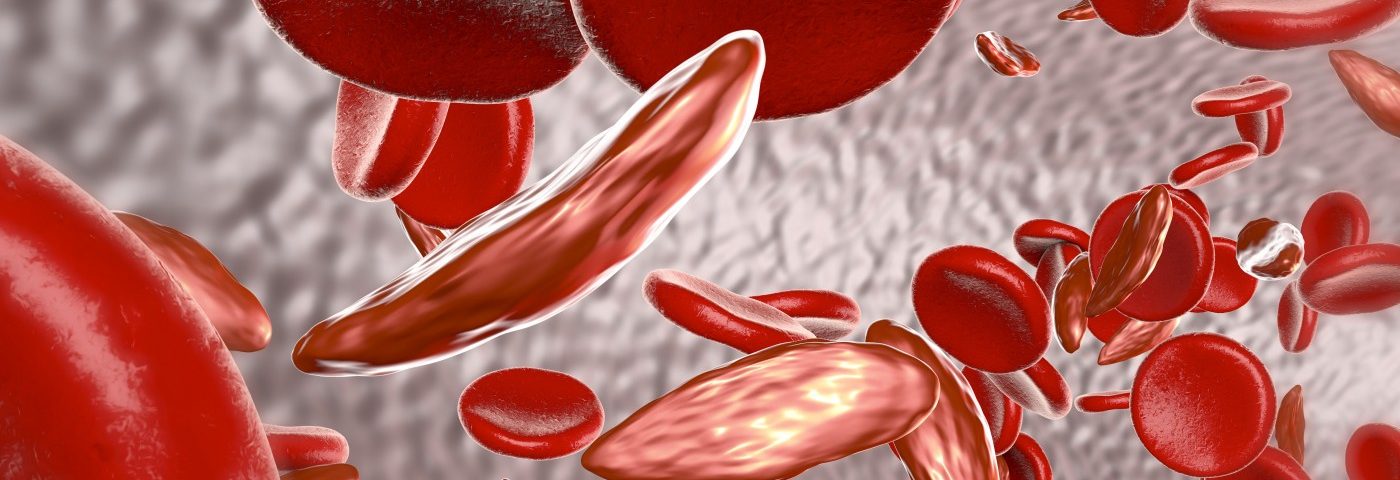Medications Activating sGC Protein May Have Promise as SCD Therapy, Study Shows

Medications that activate the protein soluble guanylyl cyclase (sGC) may have promise in the treatment of sickle cell disease (SCD), a new study in cells and animal models indicates.
The study, “Beneficial Effects of Soluble Guanylyl Cyclase Stimulation and Activation in Sickle Cell Disease Are Amplified by Hydroxyurea: In Vitro and In Vivo Studies,” was published in the Journal of Pharmacology and Experimental Therapeutics.
Preventing vaso-occlusive episodes — when “sickled” red blood cells cause blockages in small blood vessels — is a major goal of SCD treatment. One of the most commonly used medications for this purpose is hydroxyurea, which is believed to act therapeutically in SCD through several different biochemical mechanisms.
Among these mechanisms, emerging evidence has suggested that hydroxyurea increases the levels of the signaling molecule nitric oxide. Research has indicated that nitric oxide signaling is reduced in SCD, which could play a role in the development of vaso-occlusive episodes.
As such, there is a compelling rationale to believe that increasing nitric oxide signaling could be effective as a treatment strategy in SCD. Indeed, several treatments based on this rationale are currently in development.
Nitric oxide acts by binding to its protein receptor: sGC. As such, activating sGC also could be a therapeutic strategy for sickle cell disease, as it would be expected to exert similar biological effects.
In the new study, researchers in the U.S., Brazil, and Germany, in collaboration with Bayer, investigated two compounds designed to activate sGC: the sGC stimulator BAY 41-2272 and the sGC activator BAY 60-2770. Bayer is developing both compounds.
Biochemically, the difference between stimulators and activators has to do with the oxidative state of the sGC protein that the compound effects, but conceptually, the idea is that these compounds can activate sGC in a manner that simulates the protein being activated by nitric oxide.
The researchers first examined the effects of these compounds on neutrophils in dishes in the lab. Neutrophils are a type of immune cell; in people with SCD, these cells are prone to aggregation (sticking together) in response to certain inflammatory stimuli.
Treatment with either BAY 41-2272 or BAY 60-2770 significantly reduced this sticking effect in neutrophils from people with SCD. Further, neither compound affected the adhesion of neutrophils taken from people without SCD.
Notably, treatment with both BAY 60-2770 and hydroxyurea reduced neutrophil aggregation (clumps) to a significantly greater extent than treatment with either individually. The combination of hydroxyurea with BAY 41-2272 did not have a significantly stronger effect than BAY 41-2272 alone.
Further experiments demonstrated that both investigational compounds significantly decreased the activity of proteins on the surface of neutrophils that the cells use to stick together.
The researchers then evaluated BAY 41-2272 and BAY 60-2770 — alone and in combination with hydroxyurea — in a mouse model of SCD. Specifically, they measured the extent to which treatment affected the recruitment of inflammatory immune cells in the mice’s blood vessels, after the animals were injected with an inflammation-stimulating molecule.
A single dose of hydroxyurea significantly reduced this immune cell recruitment, in keeping with what is known about this medication. Treatment with either of the investigational compounds reduced immune recruitment to a similar degree, and a combination of the investigational compounds plus hydroxyrea had an even greater effect.
“The effects of BAY 60-2770 or BAY 41-2272 at the concentrations used were very similar to those of hydroxyurea,” the researchers wrote. “Importantly, coadministration of hydroxyurea together with either of the sGC modulators significantly potentiated [increased the power of] their effects on leukocyte [immune cell] recruitment.”
“This study suggests that both sGC activation and stimulation could represent approaches to reduce leukocyte recruitment to the endothelium and, therefore, reduce vaso-occlusive episodes in SCD,” they added. Of note, the endothelium is a thin membrane that lines the inside of the heart and blood vessels.
In a separate set of experiments, the researchers examined the effect of these compounds on fetal hemoglobin (HbF) expression in a blood cell line in dishes. HbF is a form of hemoglobin that, as its name suggests, is usually present only in fetal development. However, increasing its expression in adults can help compensate for the mutated hemoglobin that causes SCD. This is one of the known therapeutic mechanisms of hydroxyurea.
Consistently, treatment with hydroxyurea significantly increased HbF expression in the experiments. BAY 41-2272 also increased HbF expression, and the effect was about three times more powerful than that of hydroxyurea. Treatment with BAY 60-2770 did not affect HbF expression.
“If both HbF induction and [blocking] of vaso-occlusive events are a goal for therapy, combination therapy with both sGC stimulators and hydroxyurea could offer a potent approach for SCD management,” the researchers concluded.






